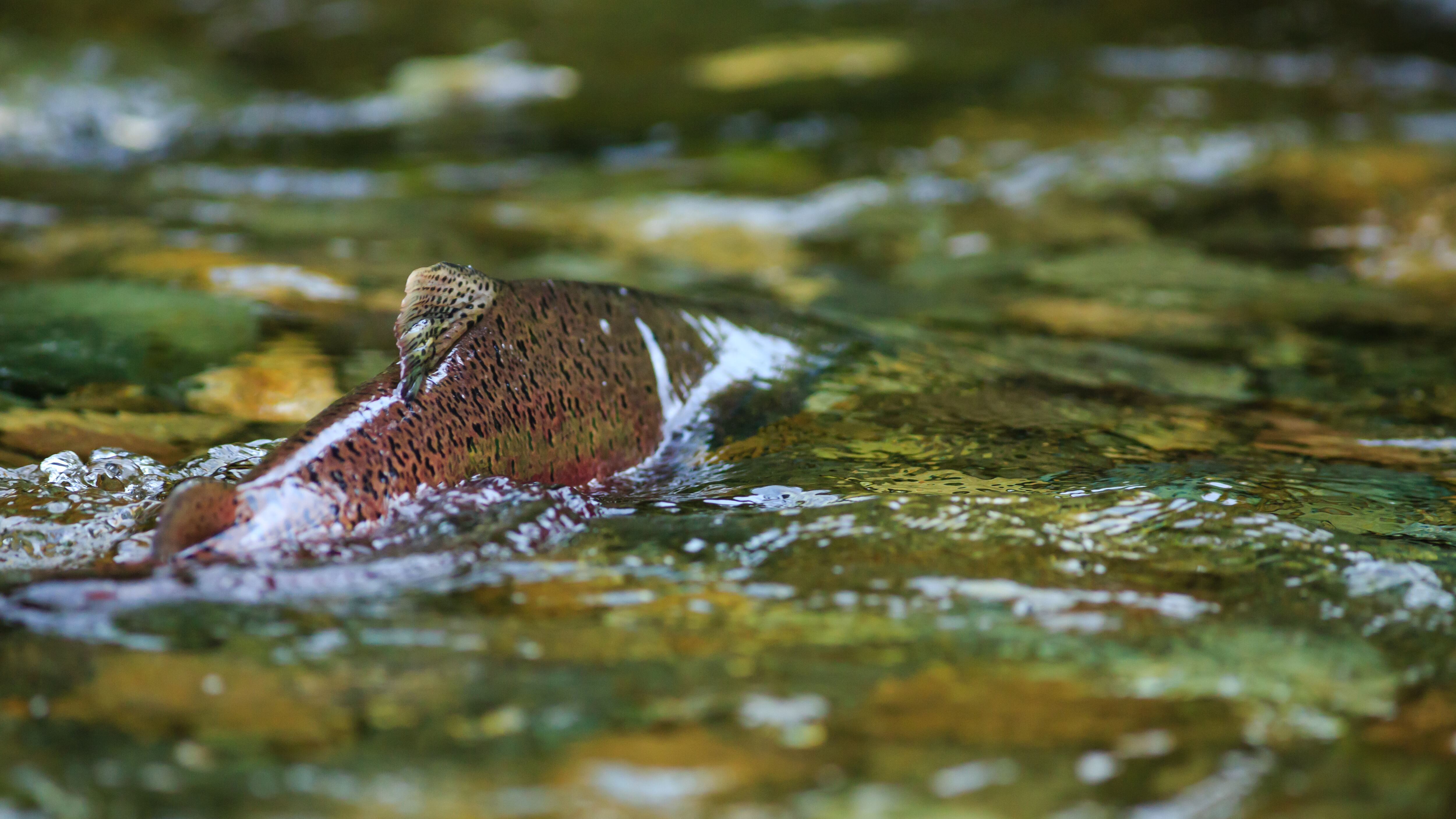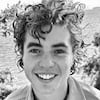If you visit Milwaukie Bay Park in the next few months, you might see what appears to be the aftermath of a great flood: large stumps, boulders and logs gathered around the confluence of Johnson Creek and the Willamette River.
By mid-October, the debris pile will be secured and rearranged into a rest stop for salmon. It marks a new chapter of the Johnson Creek Watershed Council’s work to support native fish returning to their spawning grounds in Portland.
Holly Baine, the watershed council’s restoration project manager, says deforestation and development since the late 19th century have removed a lot of natural infrastructure in Johnson Creek and the Willamette.
“At this point, we’re starting to see the long-term effects of habitat degradation as a result of removing that large wood,” Baine says. “Habitat degradation and pollution and hot water temperatures have definitely decreased the amount of salmon that are present within these systems.”
Stumps, logs and root balls provide structure to the creek. That means more niches for salmon to lay eggs and slower, cooler water, which the salmon need to survive. A slower current also allows the fish to expend less energy while navigating the watershed, Baine says.
That’s the idea behind the rest stop at Milwaukie Bay Park (which is located, of course, in Milwaukie). The watershed council is creating an eddy: a slowly circulating pool of cold water in the northeast corner of the bay where salmon and steelhead can recuperate during their return from the ocean.
Despite being squeezed between neighborhoods and industrial plants, Johnson Creek is home to a range of fish, from Chinook salmon to rainbow trout. The creek is generally colder than the Willamette River, making it a choice spot for oceangoing fish to lay eggs.
“They will start to leave Johnson Creek as these tween-age fish,” says Baine. “Many fish in the Pacific Northwest will go all the way up to Alaska and back.”
Building upon a watershed council project from 2011, the current phase of the project is more than three years in the making. The council secured funding from the Oregon Watershed Enhancement Board and the National Oceanic and Atmospheric Administration and is now in the process of staging materials at the site. While construction is underway, the northeast portion of Milwaukie Bay beach will be closed. After completion, the council will plant native plants in disturbed areas above the tide line.
The salmon rest stop is part of a larger goal to reduce pollution and increase structure along the creek. Baine says Johnson Creek is something of an ecological marvel running through the urban space of Gresham, Portland and Milwaukie. According to Baine, the riparian zone around the creek helps cool down the adjacent neighborhoods. It also provides habitat for animals like songbirds, beavers and dragonflies.
“These are all examples of other species that we’re sharing this space with,” Bain says. “There’s a symbiotic relationship we can have with Johnson Creek. That’s part of what we’re striving to help co-create.”

